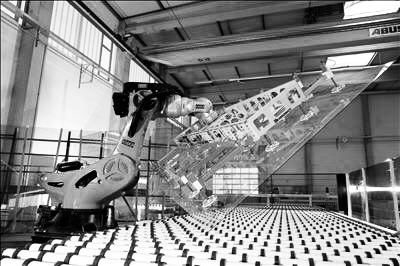
Up to 80 per cent of non-executive IT jobs could be replaced by artificial intelligence systems. That’s the assertion of Vinod Khosla, the billionaire founder of Sun Microsystems and venture firm Khosla Ventures.
I’m not so sure. The rise of AI will likely reallocate jobs (rather than simply replace them) and change ways of working for everyone in an organisation, and that means we’ll all need new skills.
While this change has started, its precise impact on organisations isn’t clear. As the physicist Niels Bohr said, “Prediction is very difficult, especially about the future.”
Some organisations have been experimenting and developing new ways of working for years. eBay, for example, has implemented a dispute resolution service using artificial intelligence. The fast and efficient system helps the organisation keep up with demand as it grows. We know the rate of change and disruption is increasing. But there isn’t a one size fits all answer. Instead, there are some themes organisations can consider when creating an agile solution that suits them.
When things are changing fast, it’s important to know your purpose. Do your employees know the core purpose or vision of the organisation and how they support it?
One of the key characteristics of organisational agility is the speed of responding to an opportunity. We want our people to make decisions quickly. How will they know what decision to make if they don’t know which option moves them closer to the organisation’s goal?
We don’t know what the future will be. We want to both steer the future and respond to it as it evolves. To do this at speed needs people at all levels to make decisions at the appropriate time. If only a few people can make those decisions, they become bottlenecks. Slow decisions slow down the organisation.
You need to distribute decision-making so they can be made where and when they’re needed.
There’s a chain of activities that come together to deliver products and services to your customers. If you want to change direction, you need to change these activities. To do this, you have to know what they are and what they add. Knowing how value is delivered also lets you structure change along the value chain to deliver it in a coordinated manner.
All roles, independent of level, will be susceptible to AI and automation. Anything that’s physically repetitive or uses a defined body of knowledge can be replaced. It’s not just roles on the shop floor, but also lawyers, accountants and management. While this sounds like the end of employment, it will free people to focus on the creative aspects of their work.
In software development, we’ve found using automation to support development teams increases productivity, quality and worker satisfaction. In part, this is because it lets people focus on the things they’re best at - creativity and communication. Start creating the environments and capabilities to support creativity at all levels.
We don’t know what skills will be needed in the future. But we do know they’ll be different from those needed today. Organisations have increasingly looked to hire skilled people rather than train existing employees. In a rapidly changing world, skills need to be constantly updated and refined. Unless you’re going to constantly hire and fire people, which is expensive and destroys trust, you’ll need to invest in training to respond to new requirements.
Organisations will need continuous learning across many channels to ensure their people are kept up to date and can fulfil a number of possible roles (which will evolve over time).
It’s currently difficult to change job structures. People have generally been hired to perform a job, and any change to that job can breach employment terms and conditions, causing trouble with unions and workers’ councils. Much of people’s work identity is taken from the job they do, so to change the job impacts their perception of themselves. As we don’t know which organisational style will best fit the future, flexible approaches are being developed, such as sociocracy and the gig economy. These largely decouple a person from the role they perform. People inhabit the role they’re best suited to while it exists. If the role is no longer needed, the person finds another. There’s an implication that the organisation will provide training so their people can learn new roles, but that means you keep business knowledge, rather than letting it walk out the door each time change happens.
Without trust in the organisation, employees will be more reluctant to embrace automation and change. Customers also need to trust how your organisation is using AI and automation. To nurture trust, you’ll need to make sure decisions made by AI aren’t bias, put proper controls in place, and have clear and open communications with customers and employees.
With AI and automation set to change the world, it’s important to start planning now. If you’re going to have the best people to keep you competitive, you’ll need a flexible organisation with a clear vision.
Image:KUKA Roboter GmbH, Bachmann, 